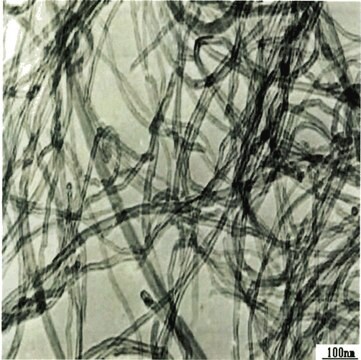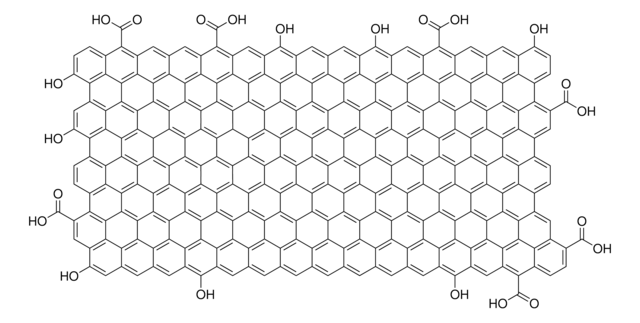750522
Carbon nanotube, single-walled
98% (Semiconducting), avg. no. of layers, 1
Sinónimos:
SWCNT
About This Item
Productos recomendados
Nivel de calidad
Análisis
2% (Metallic)
98% (Semiconducting)
formulario
solid
Características
avg. no. of layers 1
fabricante / nombre comercial
NanoIntegris, Inc.
Longitud
0.3-5 μm
diámetro
1.2-1.7 nm
mp
3652-3697 °C (lit.)
densidad
1.7-1.9 g/cm3 at 25 °C (lit.)
cadena SMILES
[C]
¿Está buscando productos similares? Visita Guía de comparación de productos
Descripción general
Aplicación
- Electronics
- Sensors
- Composites
- Energy Storage
- Study of Life Science systems
Nota de preparación
Información legal
Código de clase de almacenamiento
11 - Combustible Solids
Clase de riesgo para el agua (WGK)
WGK 3
Punto de inflamabilidad (°F)
Not applicable
Punto de inflamabilidad (°C)
Not applicable
Elija entre una de las versiones más recientes:
¿Ya tiene este producto?
Encuentre la documentación para los productos que ha comprado recientemente en la Biblioteca de documentos.
Los clientes también vieron
Artículos
Electronic and Biomedical Applications of High-Purity Single-Walled Nanotubes (SWNTs)
Carbon nanomaterials (CNMs), such as single-walled carbon nanotubes (SWCNTs), multi-walled carbon nanotubes (MWCNTs), and graphene (Figure 1), have diverse commercial applications including lighter and stronger composite materials, improved energy storage devices, more sensitive sensors, and smaller transistors.
Boron nitride nanotubes (BNNT) are close structural analogs of carbon nanotubes (CNT), which are high aspect ratio nanotubular material, where carbon atoms are alternately substituted by nitrogen and boron atoms.
Carbon nanotubes (CNTs) have received much attention since their discovery in 1991 by Sumio lijima1 due to their excellent mechanical, electrical, and optical properties.
Protocolos
Single-Walled Carbon Nanotubes synthesized by the Super-Growth Method & their properties & applications, including dispersing SGCNTs, SGCNT-polymer composites & SGCNT-metal composites are discussed.
Nuestro equipo de científicos tiene experiencia en todas las áreas de investigación: Ciencias de la vida, Ciencia de los materiales, Síntesis química, Cromatografía, Analítica y muchas otras.
Póngase en contacto con el Servicio técnico




